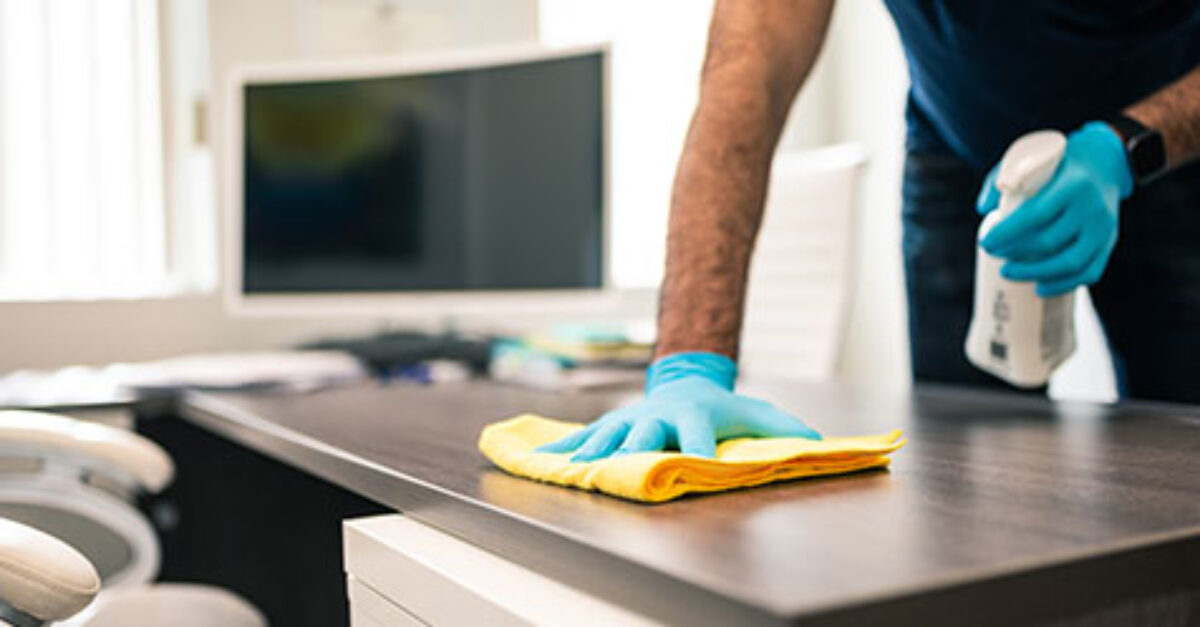Precisely How to Master Everyday Cleaning: Tips for Effective Defrosted and Cleaned Every Few Months and Decluttering
Precisely How to Master Everyday Cleaning: Tips for Effective Defrosted and Cleaned Every Few Months and Decluttering
Blog Article
Comprehending the Requirement for Thoroughly Decontaminating and Sanitizing Frequently Touched Surfaces in High-Traffic Areas
In the world of public health and wellness and safety, the precise sanitation and sanitization of frequently touched surface areas in high-traffic locations stand as paramount procedures in stopping the spread of harmful virus. By exploring the numerous aspects of surface area disinfection, from the threats associated with ignoring cleaning methods to the effective approaches that can be utilized, a more clear understanding emerges of the vital duty these techniques play in protecting public health.
Importance of Surface Area Sanitation
Emphasizing the complete sanitation of high-traffic surfaces is critical in keeping a hygienic environment and preventing the spread of harmful microorganisms. High-touch surfaces such as door deals with, light buttons, lift switches, and countertops work as reproducing premises for viruses and germs. Regular sanitation of these surface areas is imperative to lower the threat of contamination and transmission of ailments.
By executing a durable disinfection method, institutions and businesses can produce a more secure environment for workers, clients, and visitors. Proper surface disinfection not just mitigates the spread of transmittable diseases but additionally instills confidence in the cleanliness and security of the facilities. This aggressive method shows a commitment to health and health, which is specifically vital in high-traffic areas where the likelihood of exposure to pathogens is enhanced.
Additionally, surface area sanitation plays a crucial duty in total infection control techniques. Incorporated with hand hygiene practices, putting on masks, and keeping physical distancing, comprehensive sanitation of high-touch surface areas develops a comprehensive protection against the transmission of dangerous bacteria. Focusing on surface area sanitation is a necessary element of an all natural technique to health and wellness in shared spaces.
Risks of Disregarding Cleaning Practices
Neglecting extensive disinfection of high-traffic surfaces dramatically heightens the threat of microbial and viral contamination, posing a significant hazard to the health and wellness and security of people frequenting these rooms. Failure to carry out proper cleaning techniques can cause the accumulation and spread of dangerous virus, including viruses and germs, on frequently touched surfaces such as doorknobs, handrails, lift switches, and kitchen counters.

Furthermore, disregarding the value of detailed cleaning not just endangers the health of people yet additionally threatens efforts to keep a sanitary and tidy environment. It is essential to identify the significance of proper sanitation methods in stopping the spread of infections and securing public health and wellness.
Effective Sanitation Techniques
To preserve optimum cleanliness and decrease the threat of contamination on high-traffic surface areas, utilizing effective sanitation approaches is crucial. Among the most reliable and usual disinfection approaches is utilizing chemical anti-bacterials. These products can vary in toughness and composition, with some targeting details virus like viruses or bacteria. It is essential to comply with the supplier's directions for correct dilution, call time, and ventilation when making use of chemical disinfectants to ensure their efficiency visit the website - defrosted and cleaned every few months.
An additional effective technique is the use of UV-C light. UV-C light has been shown to be effective in killing a vast variety of microorganisms by disrupting their DNA structure, thus avoiding them from duplicating. Nevertheless, it is important to make use of UV-C light appropriately, making sure that the appropriate strength and direct exposure time are related to achieve the preferred sanitation outcomes.
In addition, employing vapor cleaning as a sanitation approach can be highly efficient, especially on surfaces that are heat-resistant. Steam can pass through porous surface areas and eliminate bacteria, infections, and other microorganisms successfully. When utilizing vapor cleansing, it is important to make certain that the surface gets to the called for temperature level for a sufficient amount of time to ensure correct disinfection.
Impact on Public Wellness
The maintenance of high standards of tidiness and sanitation on high-traffic surface areas plays a vital role in securing public health and wellness. Often touched surfaces in locations with high step, such as doorknobs, hand rails, elevator switches, and bathroom centers, work as check it out breeding grounds for unsafe pathogens. Falling short to effectively sanitize these surfaces can result in the rapid spread of infectious conditions within communities. By applying thorough sanitation methods, the danger of transmission of infections, germs, and other bacteria can be substantially lowered.
In high-traffic locations like airport terminals, institutions, health centers, and public transportation systems, the effect of strenuous sanitation procedures can not be downplayed. Prioritizing the sanitization of frequently touched surface areas is a positive strategy to advertising public wellness and enhancing the security of people in shared rooms.
Applying Regular Cleaning Procedures
Quickly instituting and adhering to a constant timetable of cleaning protocols is vital for preserving the sanitation and safety of high-traffic surfaces. Routine cleaning protocols are vital in stopping the buildup of germs and pathogens on frequently touched surface areas, especially in areas with high foot website traffic. By carrying out a systematic method to cleaning, companies can properly minimize the threat of illness transmission and produce a much healthier atmosphere for workers, consumers, and the public.
To establish a reliable cleansing timetable, it is vital to determine high-traffic areas that call for frequent attention. These areas might consist of doorknobs, handrails, lift switches, washroom centers, and common tools. Applying a regular cleansing routine that targets these surface areas numerous times a day can dramatically decrease the spread of damaging microorganisms and viruses.
Additionally, making use of suitable cleaner and disinfectants is key to ensuring that surfaces are thoroughly sanitized. Routine training of cleaning staff on appropriate cleaning methods and the importance of adherence to the cleansing timetable is likewise crucial in maintaining a hygienic setting. By focusing on consistent cleansing procedures, companies can promote the health and wellness of people who connect with these high-traffic surfaces.

Conclusion
Finally, it is essential to prioritize detailed disinfection and sanitization of frequently touched surface areas More Help in high-traffic locations to protect against the spread of harmful pathogens and keep public wellness. Ignoring appropriate cleaning methods can boost the risk of contamination and transmission of diseases. By carrying out regular cleansing methods and using effective sanitation techniques, we can develop a safer environment for everybody (Clear Out Any Clutter). It is vital to identify the relevance of maintaining tidy surface areas in high-traffic locations to guarantee the well-being of the community.
In the realm of public health and security, the precise sanitation and sanitization of frequently touched surface areas in high-traffic areas stand as critical procedures in avoiding the spread of hazardous microorganisms. By exploring the different aspects of surface area disinfection, from the dangers linked with ignoring cleaning protocols to the effective methods that can be used, a more clear understanding emerges of the important function these practices play in securing public wellness.Furthermore, employing steam cleansing as a disinfection method can be very effective, specifically on surfaces that are heat-resistant. When making use of vapor cleansing, it is crucial to guarantee that the surface gets to the needed temperature level for a sufficient quantity of time to assure appropriate sanitation.
In conclusion, it is vital to focus on extensive sanitation and sanitization of regularly touched surfaces in high-traffic areas to prevent the spread of unsafe virus and preserve public wellness.
Report this page